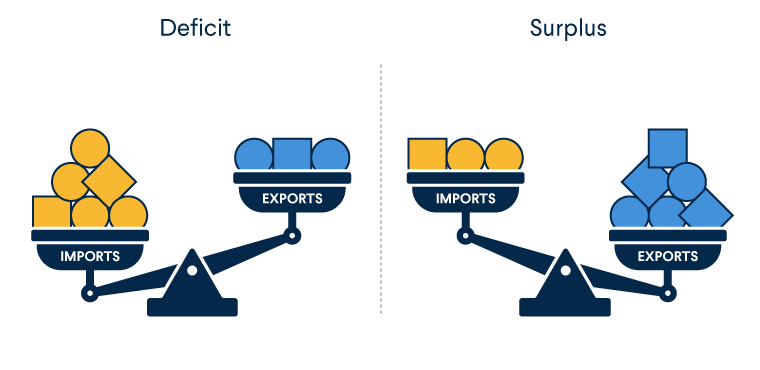What is a Trade Balance?
The trade balance is a key economic indicator that measures the difference between the value of a country’s exports and imports of goods over a specific period. It reflects the country’s economic activity and influences factors such as exchange rates, employment levels, and overall economic development. In today’s interconnected world, analyzing the trade balance helps assess a nation’s competitiveness and position in the global market.
This article will explain the concept of the trade balance in simple terms, its components, calculation methods, and its impact on economies and global financial markets.

How Does the Trade Balance Differ from the Payment Balance?
The trade balance is often confused with the balance of payments. However, they are distinct concepts.- Trade Balance: Measures the difference between the value of exported and imported goods.
- Balance of Payments: Provides a more comprehensive record of all economic transactions between a country and the rest of the world, including the trade of goods, services, income, transfers, capital flows, and financial transactions.
Components of the Trade Balance
The trade balance comprises the following key elements:- Exports: Goods and services produced domestically and sold internationally.
- Imports: Goods and services purchased from foreign suppliers and brought into the country.

How to Calculate the Trade Balance
The trade balance is calculated using the formula: Trade Balance = Total Exports – Total Imports- Total Exports: The total value of all goods sold to foreign markets.
- Total Imports: The total value of all goods purchased from foreign countries.
Example:
If a country exports goods worth $300 billion and imports goods worth $250 billion in a year: Trade Balance = $300 billion (exports) – $250 billion (imports) = $50 billion In this case, the country has a positive trade balance (surplus) of $50 billion. Conversely, if imports exceeded exports, the result would be negative, indicating a trade deficit.Real-World Example
The United States imported $324.6 billion in goods and services in January 2024, and exported $257.2 billion in goods and services to other countries. In January 2024, the United States had a trade balance of -$67.4 billion, or a $67.4 billion trade deficit.Factors Influencing the Trade Balance
The trade balance affects and is affected by a range of factors, including:- Exchange Rate Fluctuations: Changes in currency value can make exports more or less competitive.
- Trade Policies: Tariffs, quotas, and trade agreements can promote or restrict trade.
- Domestic Demand for Imports: High demand for imported goods can widen a trade deficit.
- Commodity Prices: Variations in prices of resources like oil and gas impact export and import costs.
- Product Quality and Pricing: The competitiveness of domestic goods relative to foreign goods.
- Inflation Rates: Higher inflation can reduce export competitiveness in global markets.
- Global Economic Conditions: Recessions or booms affect trade flows.
